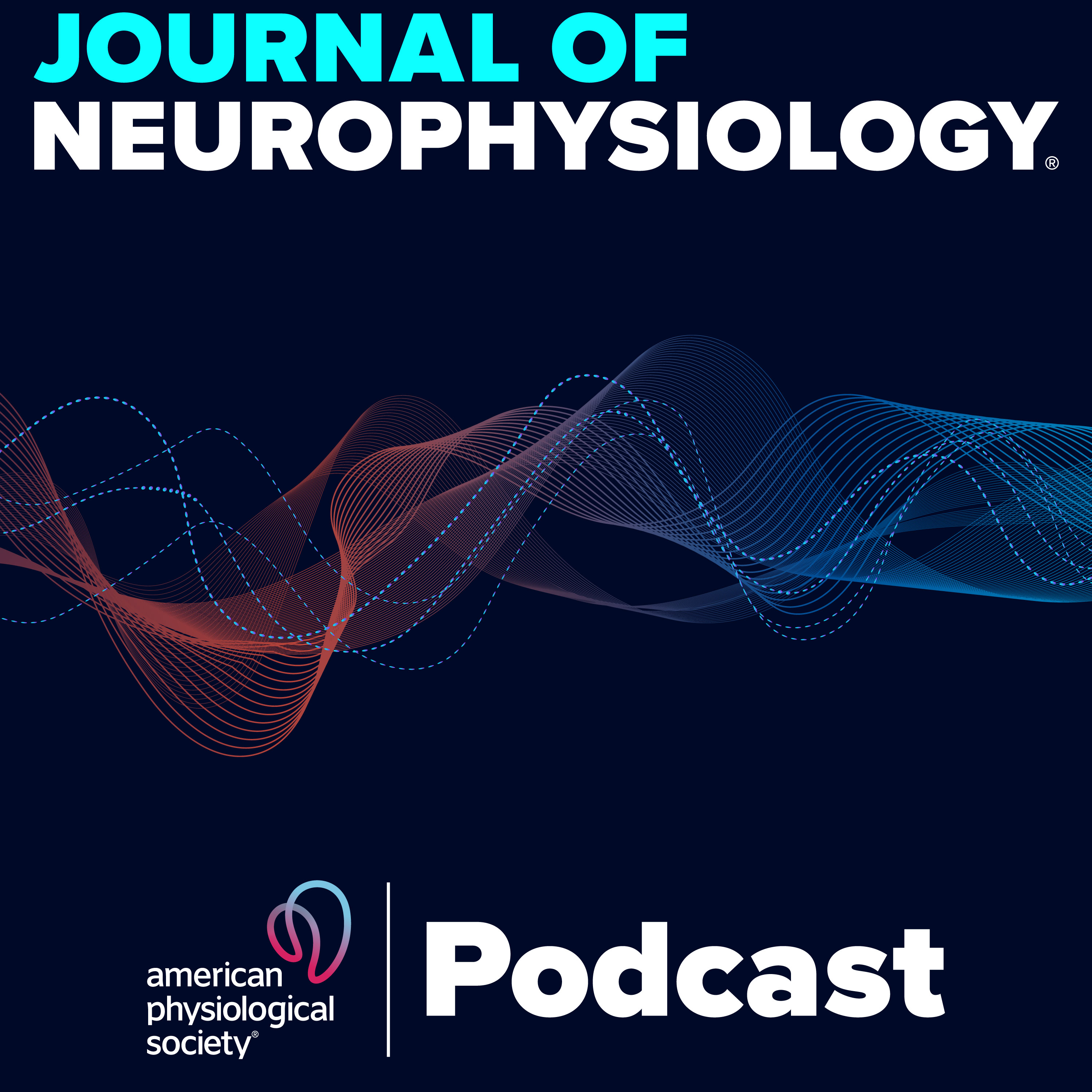Episodes
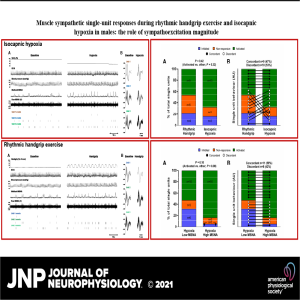
Friday Jan 21, 2022
The orchestration of the sympathetic response
Friday Jan 21, 2022
Friday Jan 21, 2022
Most of us have heard about the Flight and Fight response and the activation of the sympathetic system. But, what is often overlooked is the sheer complexity of sympathetic activation as it differentially and specifically modulates different organ systems. Different stressors activate and inhibit specific target organs, including specific muscle groups. Understanding the mechanisms how the central and peripheral nervous system interacts to control such a highly differentiated sympathetic response is challenging and we are just beginning to get a first taste of this fascinating task that our nervous system accomplishes without us being aware of it. Given the complexity of sympathetic control it should not be surprising that it can also fail and become a source of dysautonomia and other disorders. In this podcast, senior author Professor Philip Millar of the University of Guelph discusses the orchestration of the sympathetic activation with Editor-in-Chief Professor Nino Ramirez. They base their discussion on the author’s recently published manuscript “Muscle sympathetic single-unit responses during rhythmic handgrip exercise and isocapnic hypoxia in males: the role of sympathoexcitation magnitude”. Listening to this podcast you will gain not only insights into this particular manuscript, but it will raise your awareness of the astonishingly differentiated sympathetic activation in health and disease. You will also learn how microneurography can be used to characterize specific subpopulations of muscle sympathetic single units as they are activated and inhibited during mild sympathoexcitatory stress. Listen today!
Anthony V. Incognito, André L. Teixeira, Brooke M. Shafer, Massimo Nardone, Tyler D. Vermeulen, Glen E. Foster, and Philip J. Millar Muscle sympathetic single-unit responses during rhythmic handgrip exercise and isocapnic hypoxia in males: the role of sympathoexcitation magnitude Journal of Neurophysiology
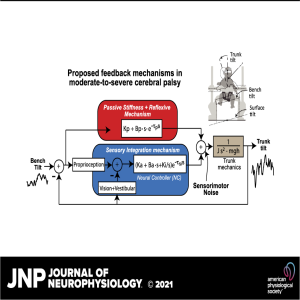
Friday Jan 14, 2022
Friday Jan 14, 2022
In this podcast coauthors Dr. Adam Goodworth of Westmont College and Dr. Sandra Saavedra of the University of Hartford discuss their manuscript titled “Postural mechanisms in moderate-to-severe cerebral palsy” with Editor in Chief Prof. Nino Ramirez. Cerebral palsy (CP) is the most common cause of motor disability in children. People with moderate-to-severe CP are typically non-ambulatory and have major impairments in trunk postural control. Dr. Saavedra has tremendous clinical experience in treating children with CP and shares in this podcast her clinical insights and why she realized how important it is to collaborate with engineers to better help children with CP. Dr. Goodworth is an inventor and engineer who closely works with Dr. Saavedra to understand the postural challenges faced by children with CP. Together they published the first systems identification study to investigate postural responses to external stimulus. They hypothesize at how the atypical postural control system functions with use of an experimentally validated feedback model.
Adam Goodworth and Sandra Saavedra
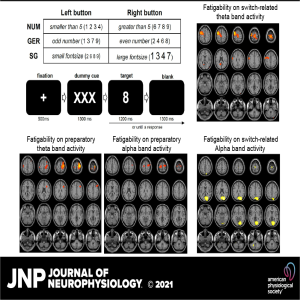
Tuesday Dec 14, 2021
Tuesday Dec 14, 2021
In our current society, multimedia use is particularly prevalent. It has become increasingly normal to multitask, which requires cognitive flexibility. How do we focus without getting fatigued at the same time? Would you think that the data on fatigability bears information about possible changes in people with “burnout” or other forms of “fatigue”? What is happening in our brain when we fatigue by pursuing our daily tasks? Author, Professor Christian Beste of Dresden University of Technology discusses these questions and more with Editor in Chief Professor Jan-Marino (Nino) Ramirez in our latest podcast. Cognitive flexibility is an essential prerequisite for goal-directed behavior and daily observations already show that it deteriorates when one is engaged in a task for (too) long time. Yet, the neural mechanisms underlying such fatigability effect in cognitive flexibility are poorly understood. We examined how theta, alpha and beta frequency event-related synchronization and desynchronization processes during a cued memory-based task switching are modulated by time-on-task effects. We put special emphasis on the examination of functional neuroanatomical regions being associated with these modulations using EEG-beamforming. We show clear declines in task switching performance (increased switch costs) with time on task. For processes occurring before rule switching or repetition processes, we show that anticipatory attentional sampling and selection mechanisms associated with fronto-parietal structures are modulated by time on task effects, but also sensory areas (occipital cortex) show fatigability-dependent modulations. After target stimulus presentation, the allocation of processing resources for response selection as reflected by theta-related activity in parietal cortices is compromised with time-on-task. Similarly, seem to a concomitant increase in alpha and beta band related attentional processing or gating mechanisms in frontal and occipital regions. Yet, considering the behavioral data showing an apparent decline in performance, this probably compensatory increase is still insufficient to allow reasonable performance. The same is likely the case for processes occurring before rule switching or repetition processes. Comparative analyses show that modulations of alpha band activity are as strongly modulated by fatigability as theta band activity. Implications of these findings for theoretical concepts on fatigability are discussed.
Shijing Yu, Moritz Mückschel, and Christian Beste
Read the manuscript here: https://doi.org/10.1152/jn.00228.2021
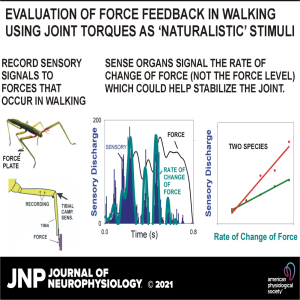
Friday Nov 12, 2021
Friday Nov 12, 2021
What are the common features of force detection in vertebrates, insects and walking machines? Do the sense organs signal different force qualities at different joints? In the podcast coauthors Professor Sasha Zill of Marshall University, Dr. Nicholas Szcecinski of the University of West Virginia and Professor Ansgar Büschges of the University of Cologne join Editor in Chief Professor Nino Ramirez to delve deeper into their manuscript titled “Evaluation of force feedback in walking using joint torques as 'naturalistic' stimuli.” Sensory encoding of forces during walking by campaniform sensilla was characterized in stick insects using waveforms of joint torques calculated by inverse dynamics as mechanical stimuli. Tests using the mean joint torque and torques of individual steps showed the system is highly sensitive to force dynamics (dF/dt). Use of 'naturalistic' stimuli can reproduce characteristics of sensory discharges seen in freely walking insects, such as load transfer among legs.
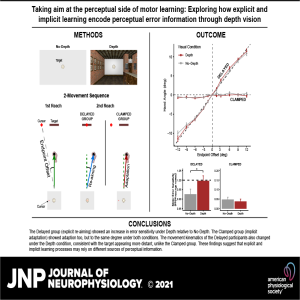
Friday Nov 05, 2021
Friday Nov 05, 2021
What are the explicit and implicit processes that contribute to motor learning in visuomotor adaptation tasks? In this podcast authors, Prof Jordan Taylor of Princeton University and Dr. Carlo Campagnoli of the University of Leeds discuss their recently published manuscript “Taking aim at the perceptual side of motor learning: Exploring how explicit and implicit learning encode perceptual error information through depth vision” by Campagnoli, et al with Editor in Chief Prof. Nino Ramirez. The authors of this manuscript leveraged a classic sensorimotor adaptation task to perform a first systematic assessment of the role of perceptual cues in the estimation of an error signal in the 3D space during motor learning. We crossed two conditions presenting different amounts of depth information, with two manipulations emphasizing explicit and implicit learning processes. Explicit learning responded to the visual conditions, consistent with perceptual reports, while implicit learning appeared to be independent of them.
Read the article: https://doi.org/10.1152/jn.00153.2021
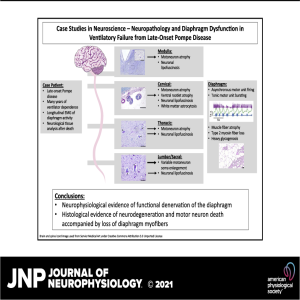
Friday Oct 29, 2021
Friday Oct 29, 2021
What is Pompe disease? What are the current treatment options and their limitations, such as enzyme replacement therapy? What insights can you gain in animal models, and how similar is the disease progression in the mouse vs the human patient? In this podcast authors Dr. Dave Fuller and Dr. Barbara Smith, of the University of Florida, discuss their recently published manuscript with Editor in Chief Prof. Nino Ramirez. This case study offered a unique opportunity to investigate longitudinal changes in phrenic neurophysiology in an individual with severe, ventilator-dependent, late-onset Pompe disease. Additional diaphragm and neural tissue histology upon autopsy confirmed significant neuromuscular degeneration, and it provided novel insights regarding rostral to caudal variability in neuropathology. These findings suggest that a successful treatment approach for ventilator-dependent Pompe disease should target the central nervous system, in addition to skeletal muscle.
#Neuroscience #JNPPodcastSeries #JNeurophysiol
David D. Fuller, Jorge A. Trejo-Lopez, Anthony T. Yachnis, Michael D. Sunshine, Sabhya Rana, Victoria E. Bindi, Barry J. Byrne, and Barbara K. Smith
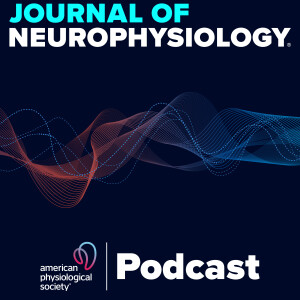
Friday Oct 22, 2021
Friday Oct 22, 2021
How do factors like advancing age and hearing loss impact auditory processing in the human brain? In this podcast, author Dr. Jana Van Canneyt of the University of Leuven discusses the recently published manuscript “Cortical compensation for hearing loss, but not age, in neural tracking of the fundamental frequency of the voice” with Editor in Chief Prof. Nino Ramirez. Previous studies disagree on the effects of age and hearing loss on the neurophysiological processing of the fundamental frequency of the voice (f0), in part due to confounding effects. Using a novel electrophysiological technique, natural speech stimuli, and controlled study design, we quantified and disentangled the effects of age and hearing loss on neural f0 processing. We uncovered evidence for underlying neurophysiological mechanisms, including a cortical compensation mechanism for hearing loss, but not for age.
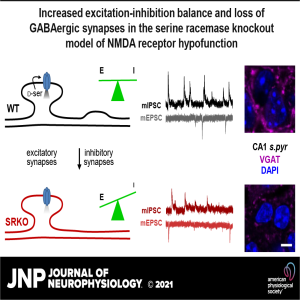
Thursday Oct 07, 2021
Thursday Oct 07, 2021
What are the neuronal mechanisms that are the neuronal mechanisms implicated in Schizophrenia? Why is the SRKO mouse such a great model? How does it compare to other models of Schizophrenia in general and NMDA hypofunction in particular? In this podcast Editor in Chief Professor Nino Ramirez and author, Dr. John Gray (University of California, Davis) discusses his manuscript titled “Increased excitation-inhibition balance and loss of GABAergic synapses in the serine racemase knockout model of NMDA receptor hypofunction”. Recently, disruption of E/I balance has become an area of considerable interest for psychiatric research. Here, we report a reduction in inhibition in the serine racemase KO mouse model of schizophrenia that increases E/I balance and enhances synaptically-driven neuronal excitability. This reduced inhibition was driven cell-autonomously in pyramidal cells lacking serine racemase, suggesting a novel mechanism for how chronic NMDA receptor hypofunction can disrupt information processing in schizophrenia. Listen to learn more about this fascinating study.
Shekib A. Jami, Scott Cameron, Jonathan M. Wong, Emily R. Daly , A.
Kimberley McAllister, and John A. Gray
Read the manuscript here: https://doi.org/10.1152/jn.00661.2020
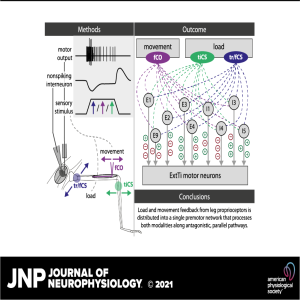
Friday Sep 10, 2021
Friday Sep 10, 2021
What types of proprioceptors are involved in insect locomotion? Insects have an exoskeleton, mammals have an endoskeleton. What are the implications for proprioception and locomotion in general? What are the advantages of studying proprioception in animals with an exoskeleton?
In this podcast, senior author Prof. Ansgar Buschges and first author Ms. Corinna Gebehart address these questions with Editor-in-Chief Prof. Nino Ramirez. They discuss their recently published manuscript, titled "Distributed Processing of Load and Movement Feedback in the Premotor Network Controlling an Insect Leg Joint."
Proprioception is crucial for motor control in legged animals. The authors show the extent to which processing of movement (fCO) and load (CS) signals overlaps in the local premotor network of an insect leg. Multimodal signals converge onto the same set of interneurons, and our knowledge about distributed, antagonistic processing is extended to incorporate multiple modalities within one perceptual neuronal framework.
https://journals.physiology.org/doi/abs/10.1152/jn.00090.2021
#Neuroscience #JNPPodcastSeries
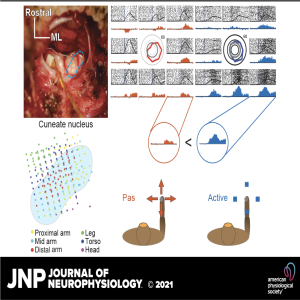
Friday Aug 27, 2021
Friday Aug 27, 2021
Why is it important to study the cuneate nucleus/proprioception in the brain? In this podcast authors, Dr. Lee Miller and Mr. Christopher Versteeg talk with our guest host, Associate Editor Professor Robert Brownstone, about their recently published article on “Encoding of limb state by single neurons in the cuneate nucleus of awake monkeys.” The cuneate nucleus (CN) is the somatosensory gateway into the brain, and only recently has it been possible to record these signals from an awake animal. The authors recorded single CN neurons in monkeys and found proprioceptive CN neurons appear to receive input from very few muscles. In addition, the sensitivity of proprioceptive CN neurons to movement changes reliably during reaching, relative to passive arm perturbations. Sensitivity is generally increased, but not exclusively so, as though CN "spotlights" critical proprioceptive information during reaching. Is the CN affected by different receptor origins of signals and/or different muscles? Listen and find out.
Read the article here: https://doi.org/10.1152/jn.00568.2020

